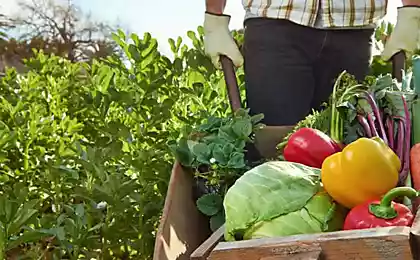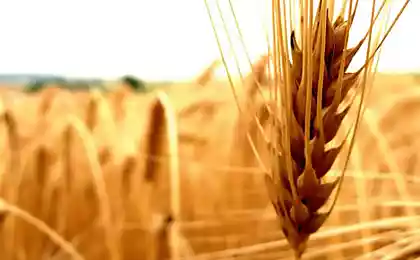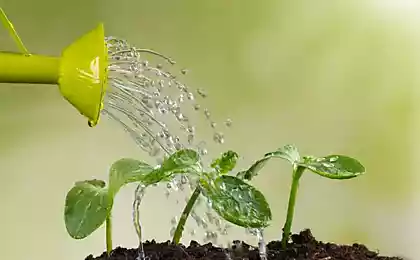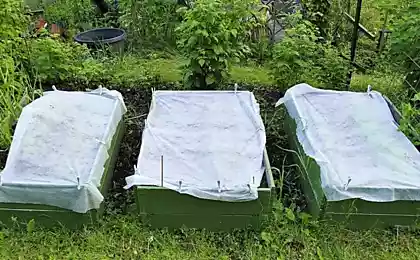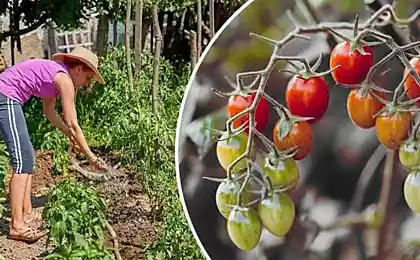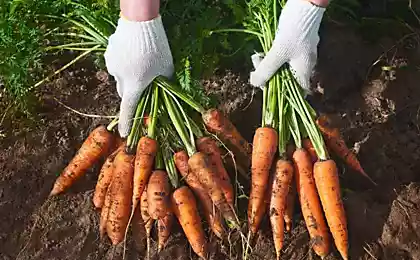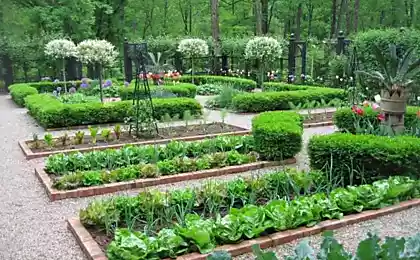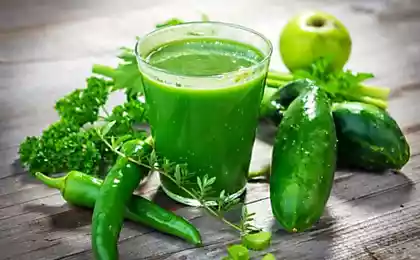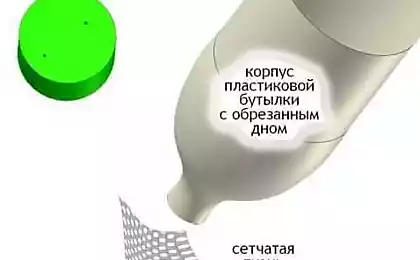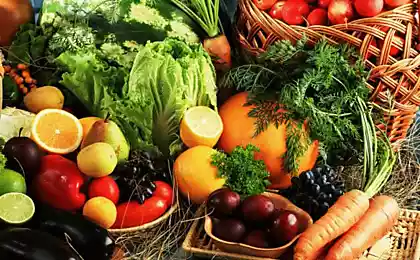693
How to irrigate a variety of vegetable crops
When and how to water vegetables
Watering plants in the garden. As you know water is life, and this is particularly true when it comes to growing plants. Because they die very quickly without water, especially vegetable crops. If you look at it from the other side, the water serves for the nutrition of plants, it absorbs soil nutrients and carries them to different parts of the plant to the leaves or fruit. As plants need moisture to avoid overheating from the sun or too high temperature.
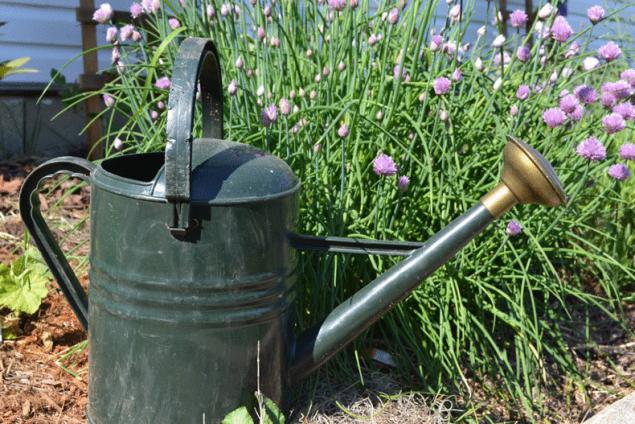
It should also be noted that most of the plants and their fruits contain quite a lot of water, this applies to most vegetable crops. Many vegetables by 80-95% water. To generate a good crop, the plants need water during the growing season vegetable crops can spend from 200 to 700 litres of water, all based on 1 m2 of occupied area.
Watering tomatoes
But excess moisture, as well as its disadvantage, slowing down the plant growth so, in the case of chronic waterlogging of the soil may develop fungal diseases or rot. When overflow plant growth, leaf mass is poorly developed and as a result suffer and the formation of the crop. The output quality of the fruit decreases as decreases and their quality.
So, before you set up the watering for a particular culture should know what is its need for water, is it changing throughout the growing season or remains unchanged. Below is an overview of the most common garden crops and their requirements for irrigation.
Irrigation of tomatoes or tomato
This crop is seedling and the roots are not deep, and therefore it requires abundant watering and high humidity of the soil. But such a need for moisture is not the same at different periods of growth and fruiting. Watering tomatoes in the open ground should be abundant immediately after transplanting to a permanent place. Such watering will provide fast and good crop establishment. Then watering should be reduced to moderate, until the fruiting period. Decrease watering needs to avoid excessive growth of green mass, besides the abundant watering at this time can result in delaying fruit ripening.
Then follows a period of fruit formation and at this time for tomatoes requires high soil moisture. Lack of moisture during this period can be fraught with reduction of the crop and affect its quality, in addition, insufficient irrigation may cause shedding of flowers and ovaries have already formed.
Watering cucumbers — irrigation
During the period of fruit ripening again, watering should be reduced to moderate, as excess moisture during this period leads to cracking of the fruit and their subsequent decay. The excess moisture can affect the taste of the next harvest.
Of great importance is the depth to which promazyvaetsya soil, so in the periods from planting to fruit formation depth drenching of the soil should be 20-25cm. In the next phase in the maturation period of the crop this depth will increase slightly, to 25-30cm.
The optimal regime of irrigation is during the dry season two times in a week to 10 liters of water per 1 m2, in a moderately dry period – one every 10 days 20-30 liters per 1 m2.
When watering this culture preferred surface irrigation, sprinkler irrigation or spraying to watering is not recommended. Since tomatoes do not need high humidity, otherwise they can start to hurt.
Watering cucumbers
This culture is very picky about watering and soil moisture as the fruits are 90 % water. Besides the large leaves evaporate a lot of moisture. Besides the abundant watering cucumbers need and high humidity.
Watering pepper
Without abundant watering you will not get a decent harvest, the fruits are bitter, petty and ugly. Therefore, in the cultivation of this vegetable is important to ensure proper and adequate watering since transplanting into the ground and ending with the aging of the fruit.
But all the same, there are certain limitations in watering, the cucumbers don't have to stand all the time in the water. In the hot and dry period should be a refreshing watering, water consumption – 5-7литров 1m2, so watering can be done every day or every other day until the end of the drought or lowered temperature. At the usual time the cucumbers need 20-30 gallons of water per 1 m2 every 4 to 5 days.
Watering pepper
Pepper is quite demanding to watering culture, because its roots are not deep. The root system of this crop is horizontally branched, and at low soil moisture the plants slow growth, poorly developed, can lose the buds and the ovary the fruit. With further shortage of water affected the quality and quantity of the harvest, the fruits are small and deformed, ageing will be delayed and may form the apical rot.
The drip irrigation system in the garden for eggplant
After transplanting seedlings into the soil the plants do not fill, otherwise the plants can develop fungal diseases or rot. It's best to water in small portions and as drying of the soil. During the period of fruit set and subsequent aging of watering should be increased and used more water. The application rate for this crop can vary from 15 to 30 liters of water per 1 m2.
Watering eggplants
This culture demanding to moisture, like pepper, but it is worth remembering that on the cold ground and the constant moisture of the plants develop poorly. In the period of survival of seedlings in open ground this culture require only moderate watering, and in wet cloudy weather and in cold wind they are generally better produce. At this time better watch out that the soil was moderately moist. In the period of fruit set and subsequent aging should take care of sufficient watering, since otherwise, because of the drought, may fall off the buds, flowers and fruitlets already.
Perfect for eggplant is watering through drip irrigation, as in this case, watering locally on the ridges directly to the main root growth. Irrigation depths are similar to those in irrigation for pepper: from 15 to 30 liters of water per 1 m2.
Depth to wet soil 25-30cm.
Watering onions
For the successful formation of the yield of these plants require very large quantities of water. It should be noted that in the onion root system is very compact and its demands on soil moisture and air are not the same in different periods of growth.
Soil moisture is important for plants in the first 14-18 days after sowing and then for 14-18 days after emergence. During this period there is an intensive formation of leaves, and the growth and development of root systems. But most of all the bow needs sufficient moisture during the period of growth of leaves and the formation of follicles.
At a later time the excess moisture will only delay the maturation of follicles and reduce the storage time of the finished harvest.
So, norms of irrigation for onions during may and June onion watered once every 7-8 days, at the rate of 5-10 liters of water per 1m2. Then the first half of July the irrigation produced less 1 every two weeks with 5-10 liters of water per 1m2. And in the second half of July, watering can maintain a minimum or to stop altogether, at this time begins to form a bulb.
Watering the roots
When growing root vegetables, watering is very important, otherwise you will get a rough and stiff crop.
The carrots and beets. In the early growth of carrots and beets are watered once in two weeks. Then in the period of formation of root crops should be watering once a week, but if you live in a dry and hot area, then you can pour the carrots and beets two or three times a week. Do not allow drying of the soil, otherwise roots will be poor. Two weeks before harvesting, stop watering. The application rate can vary from 15 to 30 liters of water per 1 m2, depth of wet soil at least 30 cm.
The radishes. This root crop requires frequent and regular watering, otherwise it will get tough and bitter roots. Produce watering every 2-3 days, and in hot and dry weather every day. The application rate can be from 10 to 15L of water per 1 m2, depth of wet soil at least 20 cm
Watering cabbage
Irrigation of this crop should be approached seriously, as it is very demanding to moisture. With insufficient watering the plants grow poorly and form small number of leaves, heads of cabbage or small or not formed. But it is worth remembering that overflow as well fraught, and not very good for the growth and education of harvest of cabbage.
After transplanting in the ground, it is necessary to maintain sufficient soil moisture, as long as the seedlings will not survive. The irrigation amount to 10-15 l of water for 1 m2.
Source: www.art-pen.ru
Watering plants in the garden. As you know water is life, and this is particularly true when it comes to growing plants. Because they die very quickly without water, especially vegetable crops. If you look at it from the other side, the water serves for the nutrition of plants, it absorbs soil nutrients and carries them to different parts of the plant to the leaves or fruit. As plants need moisture to avoid overheating from the sun or too high temperature.

It should also be noted that most of the plants and their fruits contain quite a lot of water, this applies to most vegetable crops. Many vegetables by 80-95% water. To generate a good crop, the plants need water during the growing season vegetable crops can spend from 200 to 700 litres of water, all based on 1 m2 of occupied area.
Watering tomatoes
But excess moisture, as well as its disadvantage, slowing down the plant growth so, in the case of chronic waterlogging of the soil may develop fungal diseases or rot. When overflow plant growth, leaf mass is poorly developed and as a result suffer and the formation of the crop. The output quality of the fruit decreases as decreases and their quality.
So, before you set up the watering for a particular culture should know what is its need for water, is it changing throughout the growing season or remains unchanged. Below is an overview of the most common garden crops and their requirements for irrigation.
Irrigation of tomatoes or tomato
This crop is seedling and the roots are not deep, and therefore it requires abundant watering and high humidity of the soil. But such a need for moisture is not the same at different periods of growth and fruiting. Watering tomatoes in the open ground should be abundant immediately after transplanting to a permanent place. Such watering will provide fast and good crop establishment. Then watering should be reduced to moderate, until the fruiting period. Decrease watering needs to avoid excessive growth of green mass, besides the abundant watering at this time can result in delaying fruit ripening.
Then follows a period of fruit formation and at this time for tomatoes requires high soil moisture. Lack of moisture during this period can be fraught with reduction of the crop and affect its quality, in addition, insufficient irrigation may cause shedding of flowers and ovaries have already formed.
Watering cucumbers — irrigation
During the period of fruit ripening again, watering should be reduced to moderate, as excess moisture during this period leads to cracking of the fruit and their subsequent decay. The excess moisture can affect the taste of the next harvest.
Of great importance is the depth to which promazyvaetsya soil, so in the periods from planting to fruit formation depth drenching of the soil should be 20-25cm. In the next phase in the maturation period of the crop this depth will increase slightly, to 25-30cm.
The optimal regime of irrigation is during the dry season two times in a week to 10 liters of water per 1 m2, in a moderately dry period – one every 10 days 20-30 liters per 1 m2.
When watering this culture preferred surface irrigation, sprinkler irrigation or spraying to watering is not recommended. Since tomatoes do not need high humidity, otherwise they can start to hurt.
Watering cucumbers
This culture is very picky about watering and soil moisture as the fruits are 90 % water. Besides the large leaves evaporate a lot of moisture. Besides the abundant watering cucumbers need and high humidity.
Watering pepper
Without abundant watering you will not get a decent harvest, the fruits are bitter, petty and ugly. Therefore, in the cultivation of this vegetable is important to ensure proper and adequate watering since transplanting into the ground and ending with the aging of the fruit.
But all the same, there are certain limitations in watering, the cucumbers don't have to stand all the time in the water. In the hot and dry period should be a refreshing watering, water consumption – 5-7литров 1m2, so watering can be done every day or every other day until the end of the drought or lowered temperature. At the usual time the cucumbers need 20-30 gallons of water per 1 m2 every 4 to 5 days.
Watering pepper
Pepper is quite demanding to watering culture, because its roots are not deep. The root system of this crop is horizontally branched, and at low soil moisture the plants slow growth, poorly developed, can lose the buds and the ovary the fruit. With further shortage of water affected the quality and quantity of the harvest, the fruits are small and deformed, ageing will be delayed and may form the apical rot.
The drip irrigation system in the garden for eggplant
After transplanting seedlings into the soil the plants do not fill, otherwise the plants can develop fungal diseases or rot. It's best to water in small portions and as drying of the soil. During the period of fruit set and subsequent aging of watering should be increased and used more water. The application rate for this crop can vary from 15 to 30 liters of water per 1 m2.
Watering eggplants
This culture demanding to moisture, like pepper, but it is worth remembering that on the cold ground and the constant moisture of the plants develop poorly. In the period of survival of seedlings in open ground this culture require only moderate watering, and in wet cloudy weather and in cold wind they are generally better produce. At this time better watch out that the soil was moderately moist. In the period of fruit set and subsequent aging should take care of sufficient watering, since otherwise, because of the drought, may fall off the buds, flowers and fruitlets already.
Perfect for eggplant is watering through drip irrigation, as in this case, watering locally on the ridges directly to the main root growth. Irrigation depths are similar to those in irrigation for pepper: from 15 to 30 liters of water per 1 m2.
Depth to wet soil 25-30cm.
Watering onions
For the successful formation of the yield of these plants require very large quantities of water. It should be noted that in the onion root system is very compact and its demands on soil moisture and air are not the same in different periods of growth.
Soil moisture is important for plants in the first 14-18 days after sowing and then for 14-18 days after emergence. During this period there is an intensive formation of leaves, and the growth and development of root systems. But most of all the bow needs sufficient moisture during the period of growth of leaves and the formation of follicles.
At a later time the excess moisture will only delay the maturation of follicles and reduce the storage time of the finished harvest.
So, norms of irrigation for onions during may and June onion watered once every 7-8 days, at the rate of 5-10 liters of water per 1m2. Then the first half of July the irrigation produced less 1 every two weeks with 5-10 liters of water per 1m2. And in the second half of July, watering can maintain a minimum or to stop altogether, at this time begins to form a bulb.
Watering the roots
When growing root vegetables, watering is very important, otherwise you will get a rough and stiff crop.
The carrots and beets. In the early growth of carrots and beets are watered once in two weeks. Then in the period of formation of root crops should be watering once a week, but if you live in a dry and hot area, then you can pour the carrots and beets two or three times a week. Do not allow drying of the soil, otherwise roots will be poor. Two weeks before harvesting, stop watering. The application rate can vary from 15 to 30 liters of water per 1 m2, depth of wet soil at least 30 cm.
The radishes. This root crop requires frequent and regular watering, otherwise it will get tough and bitter roots. Produce watering every 2-3 days, and in hot and dry weather every day. The application rate can be from 10 to 15L of water per 1 m2, depth of wet soil at least 20 cm
Watering cabbage
Irrigation of this crop should be approached seriously, as it is very demanding to moisture. With insufficient watering the plants grow poorly and form small number of leaves, heads of cabbage or small or not formed. But it is worth remembering that overflow as well fraught, and not very good for the growth and education of harvest of cabbage.
After transplanting in the ground, it is necessary to maintain sufficient soil moisture, as long as the seedlings will not survive. The irrigation amount to 10-15 l of water for 1 m2.
Source: www.art-pen.ru

